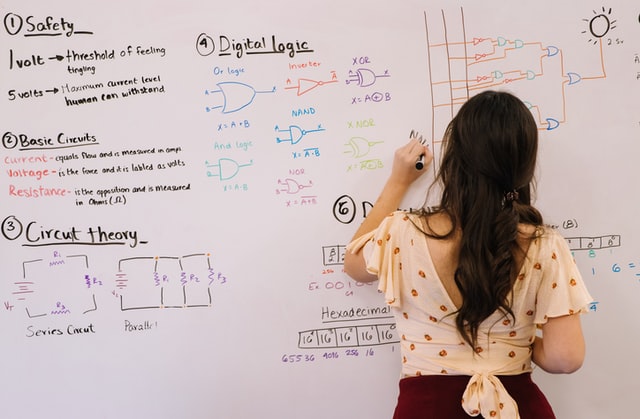Geography education is an essential part of the secondary school curriculum. It provides students with knowledge of the physical and social world around them and the skills to analyze and interpret information about the environment.
However, teaching geography to secondary school students can be challenging, as the subject matter can be perceived as dry and dull, and students may have limited prior knowledge or misconceptions.
To make the subject more engaging and accessible to students, geography teachers must adopt effective teaching strategies, develop relevant and exciting lesson plans, and use appropriate resources and teaching materials.
This article will explore some best practices for teaching geography to secondary school students, including planning the curriculum, using technology, incorporating real-world examples, assessment and evaluation, and strategies for overcoming challenges.
Table of contents
- Strategies for Effective Teaching
- 1. Developing Engaging and Relevant Lesson Plans
- 2. Identifying Appropriate Resources and Teaching Materials
- 3. Using Technology to Enhance Learning and Engagement
- 4. Incorporating Real-World Examples to Make the Subject Matter More Relatable
- 5. Implementing Field Trips and Outdoor Learning to Bring Geography to Life
- 6. Encouraging Student Participation and Active Learning
- Assessment and Evaluation
- Conclusion
Strategies for Effective Teaching

Teaching geography to secondary school students requires creative and practical strategies that engage students and foster critical thinking skills.
Here are some strategies that can help you make your lessons more engaging, relatable, and meaningful:
- Developing Engaging and Relevant Lesson Plans
- Identifying Appropriate Resources and Teaching Materials
- Using Technology to Enhance Learning and Engagement
- Incorporating Real-World Examples to Make the Subject Matter More Relatable
- Implementing Field Trips and Outdoor Learning to Bring Geography to Life
- Encouraging Student Participation and Active Learning
1. Developing Engaging and Relevant Lesson Plans
Developing engaging and relevant lesson plans is essential for keeping students interested and motivated in geography.
Here are some tips to help you develop effective lesson plans:
- Start each lesson with a hook, such as a news story or an interesting fact, to grab students’ attention. This will help your students stay interested and engaged in the lesson.
- Use various teaching strategies, such as group work, discussions, and hands-on activities, to keep students engaged. This will help cater to different learning styles and keep the lessons exciting and dynamic.
- Incorporate real-world examples and case studies to make the subject more relevant to students’ lives. This will help your students understand how geography relates to their lives and the world.
- Connect geography to other subjects, such as history, economics, and science, to show students how geography is interconnected with other fields of study.
- Use maps and other visual aids to help illustrate geographic concepts and make the subject matter more tangible for your students. For example, you could use interactive maps to show how climate change affects different regions or topographic maps to demonstrate how landforms and terrain impact human settlement.
- Use current events to make geography lessons more engaging and relevant. For example, you could use news stories about natural disasters or geopolitical events to spark discussions and deepen students’ understanding of key concepts.
- Please encourage students to explore their interests and develop research skills by assigning projects or inquiry-based activities. For example, you could have students research the geography of a country or region that interests them and create presentations or reports to share with the class.
- Incorporate field trips or outdoor activities to help students connect with the physical landscape and develop a deeper appreciation for the natural world. For example, you could take students on a nature walk to observe and document the local flora and fauna or organize a field trip to a nearby cultural or historical site.
- Provide opportunities for students to collaborate and work together, as this can help foster critical thinking and communication skills. For example, you could have students work in groups to solve a geographic challenge or participate in debates or simulations to explore different perspectives on global issues.
2. Identifying Appropriate Resources and Teaching Materials
Selecting appropriate resources and teaching materials is critical for effective geography teaching.
Here are some tips to help you identify the right resources:
- Stay up-to-date with current events and news stories related to geography, and use these as examples in the classroom. This will help your students understand how geography relates to their lives and the world.
- Use various resources, such as textbooks, online resources, videos, maps, and geographic information systems (GIS), to provide different perspectives on the subject matter. This will help your students develop a well-rounded understanding of geography.
- Make sure resources and materials are age-appropriate and align with the curriculum standards. This will ensure that your students learn what they need to know to succeed in their studies.
- Consider the accessibility of resources for students, especially those from low-income families or with disabilities. This will help ensure all students have equal access to the resources required to succeed.
- Look for opportunities to incorporate technology into the curriculum, such as virtual field trips or interactive maps. This will help make the subject matter more engaging and interactive for your students.
3. Using Technology to Enhance Learning and Engagement
Incorporating technology-based resources into your lessons can help students visualize and understand geographic concepts better.
Some examples of technology-based resources you can use include:
- Virtual field trips: Use online resources to take students on virtual field trips to different parts of the world, such as national parks or cultural landmarks. This can give students a more immersive experience and help them connect with the subject matter.
- Digital maps: Use digital maps to help students understand geographic features and phenomena, such as climate patterns or population distributions. Tools like Google Maps and National Geographic Mapmaker can be great resources.
- Online resources: There are many online resources available to teachers that can help enhance lessons, such as videos, interactive quizzes, and games.
4. Incorporating Real-World Examples to Make the Subject Matter More Relatable
Connecting geography concepts to real-world situations can help students better understand the relevance and importance of the subject matter.
Here are some strategies for incorporating real-world examples into your lessons:
- Use current events: Current events and news stories can be a great way to connect geography concepts to real-world situations. For example, you can use news stories about climate change or geopolitical events to spark discussions and deepen students’ understanding of key concepts.
- Use real-world data: Data from real-world sources can help make geography concepts more relatable to students. For example, you could use data from the US Census Bureau to illustrate population distribution in different regions of the country.
- Encourage critical thinking: Encourage students to think critically about how geography impacts their daily lives, communities, and the world. For example, you could ask them to explore the geography of their community and identify how different factors, such as climate, topography, and natural resources, impact the area.
5. Implementing Field Trips and Outdoor Learning to Bring Geography to Life
Field trips and outdoor learning experiences can be a great way to give students hands-on experience with geography concepts and phenomena.
Here are some strategies for implementing field trips and outdoor learning in your lessons:
- Plan field trips: Plan field trips to local parks, nature reserves, and museums to expose students to different aspects of geography and the natural world. For example, you could plan a trip to a local museum to explore exhibits on the geography of other world regions.
- Use local resources: Use local resources, such as parks and landmarks, to help students explore the geography of their community. For example, you could take students on a nature walk to observe and document the local flora and fauna or organize a field trip to a nearby cultural or historical site.
- Encourage exploration: Encourage students to explore their local community and document the area’s geography. For example, you could have students create maps of the area and present their findings to the class.
6. Encouraging Student Participation and Active Learning
Engaging students in active learning is essential for developing critical thinking skills and deepening their understanding of geography concepts.
Here are some strategies for encouraging student participation and active learning:
- Incorporating group projects and discussions: Students can work in groups to research and present on various geography-related topics. This encourages collaboration and active learning while allowing students to take ownership of their education.
- Using games and simulations: Games and simulations can make learning fun and engaging while reinforcing critical geographic concepts. For example, a game that challenges students to navigate a virtual city can help strengthen spatial reasoning skills.
- Allowing for student choice: Allowing students to choose their topics for research or presentations can increase their engagement and motivation. This also allows them to explore their interests within the context of geography.
- Providing regular feedback: Regular feedback on assignments, projects, and presentations can help students understand where they need to improve and what they are doing well. This can also motivate them to continue learning and participating actively in class.
Assessment and Evaluation

Assessment and evaluation are critical components of effective geography teaching in secondary schools. Here are some key aspects to consider:
- Setting clear learning objectives: Before beginning a unit or lesson, teachers should establish clear learning objectives that are measurable and attainable. These objectives can help guide the assessment process and ensure students meet the necessary standards.
- Using various assessment methods: Different students have different strengths and weaknesses, and using multiple assessment methods can help identify these differences. For example, some students may perform better on written exams, while others may excel at oral presentations or group projects.
- Providing timely and constructive feedback: Feedback is essential to the assessment process. Teachers should provide timely feedback to students on their work, highlighting areas of strength and improvement. Feedback should be specific, actionable, and tailored to each student’s needs.
- Incorporating self-assessment and peer assessment: Encouraging students to reflect on and evaluate their work can promote metacognition and self-directed learning. Peer assessment can also be a helpful tool for fostering collaboration and teamwork.
- Using assessment data to guide instruction: The data collected from assessments can guide instruction and identify areas where students may need additional support or resources. Teachers can use this information to adjust their lesson plans and provide targeted interventions for struggling students.
By implementing these assessment and evaluation strategies, geography teachers can ensure that their students progress towards their learning objectives and achieve the necessary standards.
They can also give students the feedback and support they need to succeed in geography.
Conclusion
In conclusion, geography is an important subject that helps students develop a deeper understanding of the world around them.
By teaching geography effectively, secondary school teachers can help students develop critical thinking skills, enhance their spatial reasoning abilities, and foster a greater appreciation for cultural diversity and global interconnectedness.
To teach geography effectively, teachers must identify appropriate resources and teaching materials, develop engaging and relevant lesson plans, and incorporate effective strategies for teaching and assessment.
By doing so, teachers can create an inclusive, stimulating classroom that focuses on student learning and growth.
Ultimately, the goal of geography education in secondary schools is to prepare students to be informed and engaged global citizens, capable of making informed decisions and contributing to a better world.
With the right tools and strategies, geography teachers can help their students achieve this goal and set them on a path to success inside and outside the classroom.
Let me know if you have any questions or need further clarification. I would love to assist you.
You can watch my videos on the Studentship YouTube Channel by clicking here.
Join my Facebook Group, Like my Facebook Page or Follow Me on WhatsApp for more interactive discussions.
